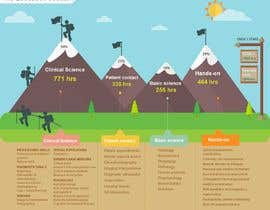As you sit there, possibly really feeling a twinge of discomfort in your neck, have you ever thought the detailed structures that comprise your cervical spinal column? Comprehending exactly how the vertebrae, discs, and nerves communicate in this region can shed light on why neck pain can be so relentless and devastating. By checking out the structures of cervical back composition and its ramifications for neck discomfort, you might discover insights that might aid you better take care of or perhaps prevent those bothersome pains and stiffness.
Relevance of Cervical Spinal Column Makeup
Understanding the importance of cervical back composition is essential in understanding the complexities of neck pain. The cervical back, comprised of 7 vertebrae, plays an essential role in sustaining the head's weight and helping with movement. It houses the spine, which transfers messages between the mind and the rest of the body. Furthermore, the cervical back shields these delicate nerves and offers architectural security to the neck area.
In addition, the cervical spine enables a wide variety of movement, enabling you to transform your head, turn it laterally, and nod up and down. chiropractor austin tx walk in has particular functions and features that contribute to the total versatility and stability of the neck. Understanding the composition of the cervical back can assist you grasp how injuries or degenerative problems in this area can result in neck pain and associated signs and symptoms.
Parts of the Cervical Back
When discovering the components of the cervical spinal column, it becomes apparent that its structure contains seven vertebrae, classified C1 to C7, piled on top of each other. These vertebrae are essential as they give assistance to the head and permit a vast array of activity in the neck.
The topmost vertebra, C1, likewise referred to as the atlas, supports the skull and enables the sluggish activity of the head. Straight underneath C1 is the C2 vertebra, known as the axis, which allows for the rotation of the head back and forth.
Relocating down https://felixnidxr.slypage.com/32391482/merging-typical-physical-treatment-with-cutting-edge-techniques-for-back-pain-relief-can-change-your-recovery-trip , each vertebra plays a crucial function in preserving the spine's adaptability and security. Between each vertebra are intervertebral discs that function as pillows, taking in shock and preventing the vertebrae from massaging against each other.
Recognizing look at this site of the cervical spine is crucial in understanding exactly how the spine functions and its potential influence on neck discomfort.
Partnership Between Spinal Column and Neck Discomfort
The connection between the back and neck pain is an essential element of understanding musculoskeletal discomfort. Your spine, specifically the cervical region, plays a significant function in supporting your head and allowing for various activities. When there's an issue in the spinal column, such as a herniated disc or misalignment, it can straight impact the surrounding tissues and nerves, leading to neck discomfort. Poor position, injuries, and degenerative conditions can all contribute to spine-related neck pain.
It's essential to recognize that the spine and neck feature as a cohesive system. Any type of irregularities or inequalities in the spine can cause stress on the neck muscular tissues and ligaments, leading to pain and rigidity.
simply click the up coming website that you have a standard understanding of cervical back composition and its connection to neck pain, you can much better appreciate the complexities of your own neck discomfort. Remember, the wellness of your cervical spinal column plays an important role in sustaining your head and assisting in activity, so it is essential to take care of it through proper stance, exercise, and regular check-ups with a healthcare specialist. Remain informed and aggressive about your spine wellness to avoid and handle neck pain successfully.
